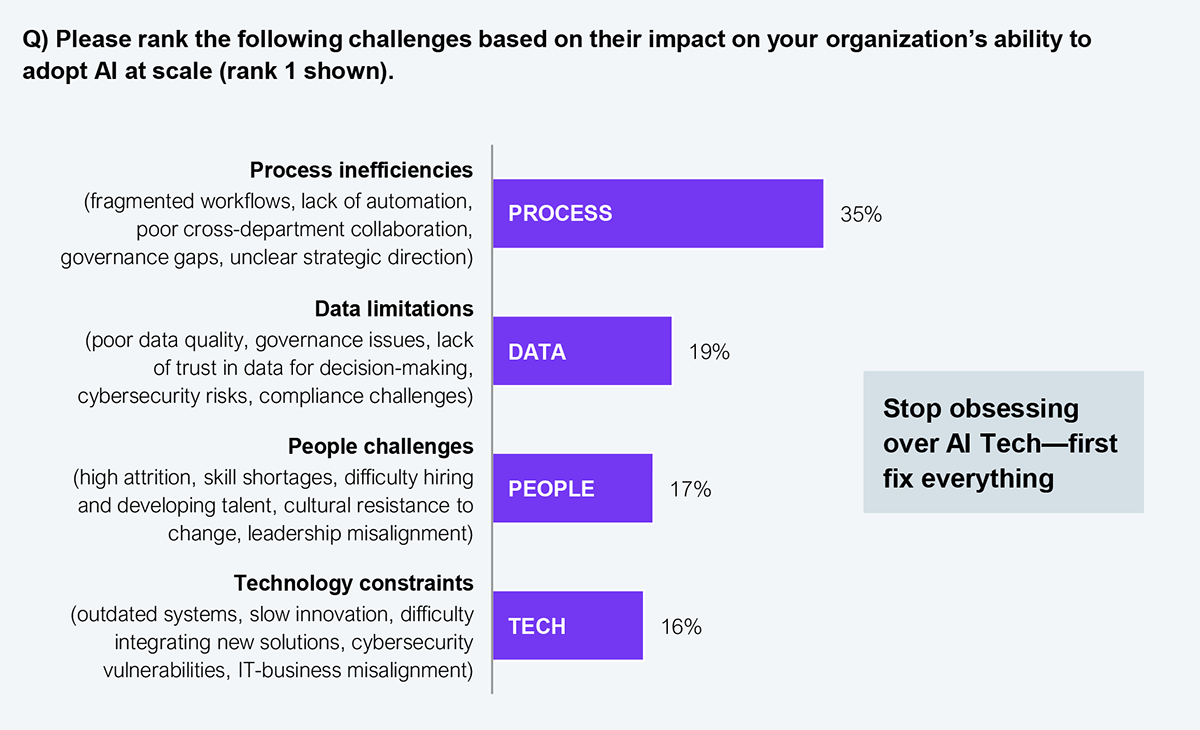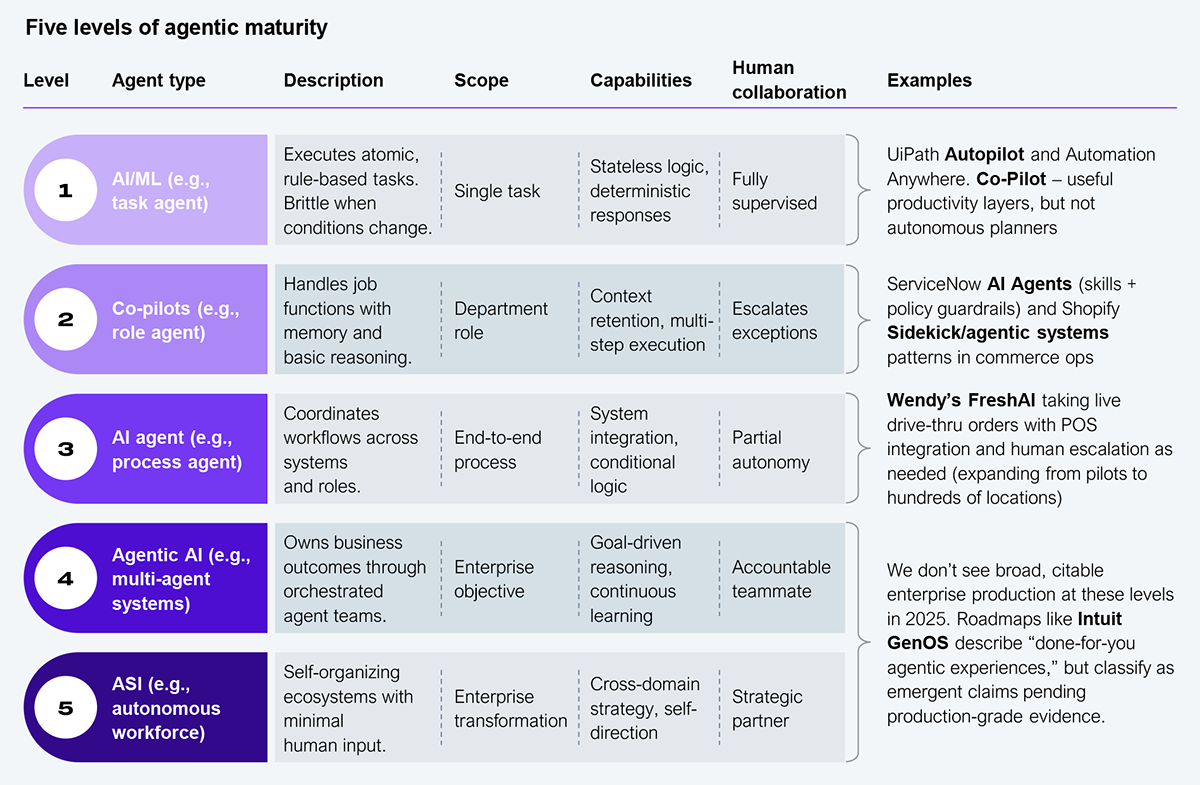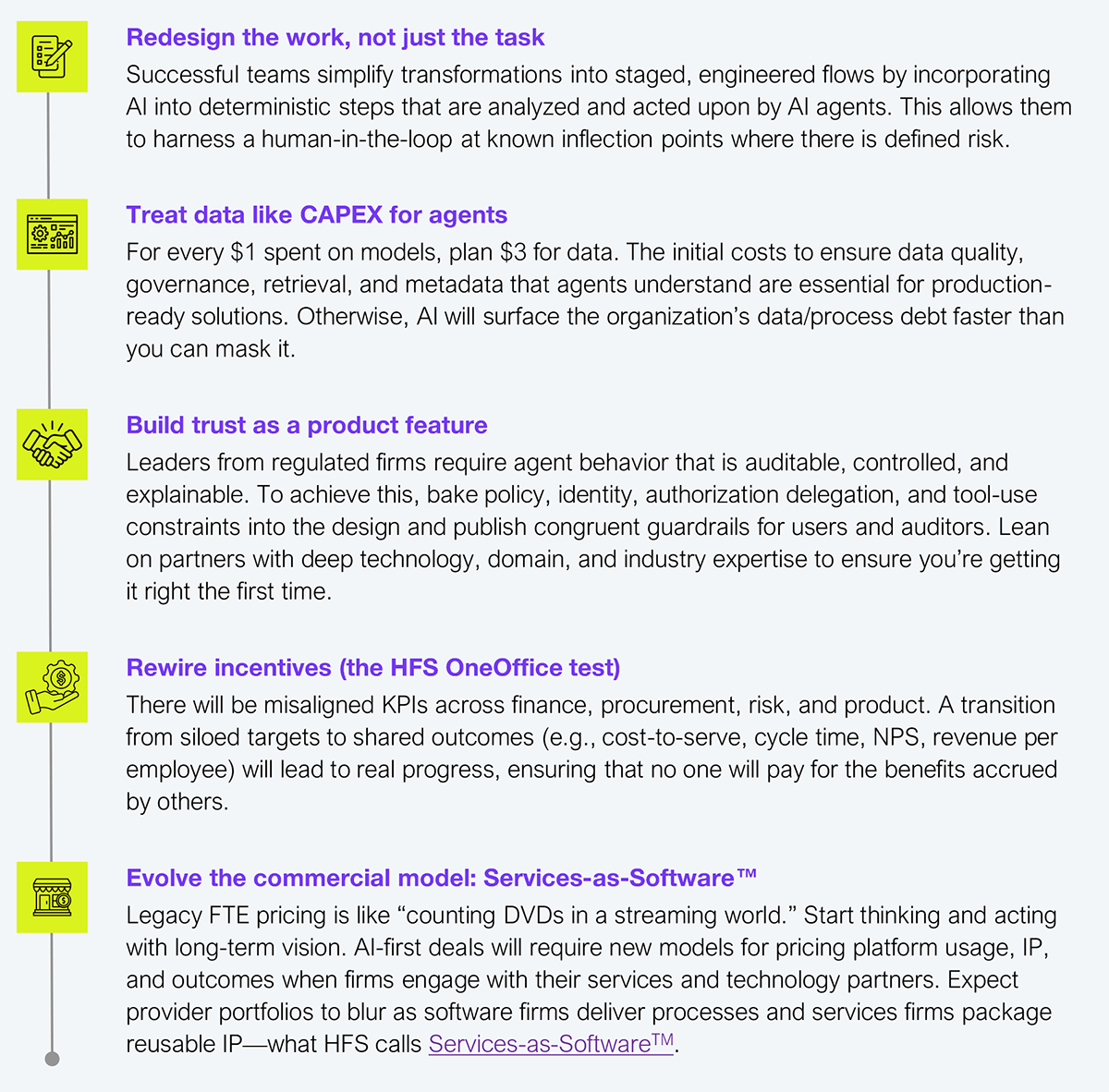Supported by Akkodis, HFS Research brought together executive leaders from the financial, communications, pharmaceuticals, and retail sectors to understand how AI is shaping their IT and operations strategies in late 2025. In our exclusive session, leaders debated whether agentic AI is hype, hope, or something they can scale across their firms. All agreed on two points: the buzz has outrun reality, and the real barrier isn’t tech—it’s process, culture, and incentives that will unlock the power of AI.”
The consensus at the roundtable was clear: firms can’t scale AI until they re-architect broken workflows. HFS Pulse data confirmed this, citing process debt as the main barrier. Leaders stressed that chasing shiny copilots or proliferating AI platforms without fixing processes simply automates dysfunction. Survey responses from Global 2000 decision-makers (see Exhibit 1) echoed the same sentiment. If the processes are broken, flawed, or not ready for AI, all the work on cleaning data, training people, and investing in tech will not yield the desired results.

Sample: 305 major enterprise decision makers
Source: HFS Research Pulse, 2025
While many believe AI is overhyped, the development of skills and expertise in using AI to improve outcomes across teams instills hope for larger, scalable solutions. However, to do so, leaders must rethink how work is done. Confining AI to conversations around “which tech do people want to use?” instead of “what processes can we fix now to prove AI’s value?” limits success to point solutions rather than exploring how their organizations can create better experiences through process improvements.
The most effective AI tool strategy emerging from our discussions is to focus on picking two to three AI platforms and committing to them. Choosing a few rather than attempting to adopt the latest breakthrough will yield longer and more sustainable outcomes. Once the AI tools are selected, the real work begins. Five practices stood out in our discussions, grounded in real-world experiences and observations that act as a blueprint for other enterprises to drive their AI programs from hype to reality. These include:
Most enterprises are deploying automation, copilots, and purpose-built AI agents but are labeling them agentic AI, which only muddies expectations. Attendees discussed how overpromising autonomy and agency in AI can undermine trust and delay outcomes.
According to HFS’ research on agentic washing, maturity must be staged—from copilots to process agents to multi-agent systems. Enterprises that skip this risk hype, fatigue, and regulatory backlash. Exhibit 2 outlines the five stages of AI, with agentic AI being more complex; so make sure your team knows what AI stage they really need.

Source: HFS Research, 2025
If you’re looking to maximize the benefits of your AI efforts, the panel’s insights are worth incorporating into your strategy. Here are five areas you should focus on:

Source: HFS Research, 2025
Agentic AI won’t scale based on hype or half-measures. To move from the buzz to business value, enterprises must fix process debt, bake trust into design, and rewire incentives. Treat agentic AI as the later stage in a fundamental operating model shift, not just another IT program. Ignoring this will jeopardize hope, leading to its collapse under fatigue.
Register now for immediate access of HFS' research, data and forward looking trends.
Get StartedIf you don't have an account, Register here |
Register now for immediate access of HFS' research, data and forward looking trends.
Get Started